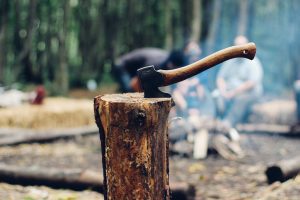Tree cutting can be both exciting and dangerous. However, there are some things that you
should know before you start. Before you start, make sure you have all of the safety gear that
you need and that you are clear of the area you’re cutting. If possible, have a family member or
friend help you. If anything goes wrong, they will be able to guide you while you work on the tree.
Also, consider where the tree could fall on a house, fence or road.
There are many ways trees can be cut. Some methods are better than others. One involves
cutting the tree into three sections. The first cut is made on the side facing the direction of fall,
and is about one-third of the way through the tree. The second cut is two to three inches lower
than the first, and then slants upwards. The third cut is horizontally into a tree and is called a
backcut. This method is more time-consuming, but will prevent any damage to surrounding
areas.
Before you can start cutting trees, you will need a business license. To do this, you can register
your business with the secretary of state in your state. After you have registered your business,
you can choose whether to register it as a limited liability company, partnership, or corporation.
You also need business insurance. You should be familiarized with all the laws and regulations
pertaining to tree cutting. A valid business license will provide you with the legal protection you
need in order to operate your business safely.
Tree trimming costs depend on how difficult it is to access the tree. This affects safety and cost.
If the crew cannot drive up to the tree, they will need to cut it from the ground. Also, if the tree is
diseased or unattractive, the extra time and effort will be reflected in the price. Some services
offer discounts if you hire them to cut multiple trees in the same area. For more information, you
can contact a local office.
The best chainsaw to use for tree cutting should be 3.5 horsepower and have a 20-inch bar, as
this will indicate how deep the blade will penetrate the tree. A chainsaw is dangerous, and flying
debris can seriously damage your eyes. When trimming a tree, wear heavy leg protection such
as knee-high safety booties or leg protectors. To protect your legs, you will need a safety bar if
you are cutting large trees.

Tree cutting is an important part of the linemen’s job. Linemen must trim branches near power
lines or other electrical equipment. Maintaining vegetation away from powerlines will make it
easier for them. Power lines can be knocked down by the weight of branches, so it is important
to use the right tools. An arborist can help you determine if a tree is still healthy. If you arenâ€TMt
sure, you can take photos and get a resistograph reading.
Once you have determined the tree’s height, you can decide how to trim it. It is also important to
know where the tree is falling from. Clear the area around the tree from all debris. If you’re not
comfortable with this task, hire an arborist or tree-cutting service. The arborist will also provide
tips and tricks for tree cutting. This can be a very risky process. A professional arborist is
available to assist you in all aspects of tree-cutting.
While trimming is often done for aesthetic purposes, it can also protect the tree from pests and
keep it looking healthy. Trimming is used for healthy growth by removing unwanted branches
and root. It also opens up the tree, allowing sunlight to reach interior branches. Not only is it
beautiful, but trimming and pruning are vital to tree health. They may need to be taken down if
they are in an unhealthy state.
Pruning is a common task, but landscape trees need more specialized care. Pruning should be
done with a good knowledge of tree biology, otherwise it could lead to permanent damage or a
shorter lifespan. The type of cut made will determine the growth pattern and the overall aesthetic
appeal of the tree. Pruning is often the only option when a tree becomes dangerous, dead, or
dying. It can be helpful in improving the structure of the tree, improve the safety of a house, or
protect other structures.

